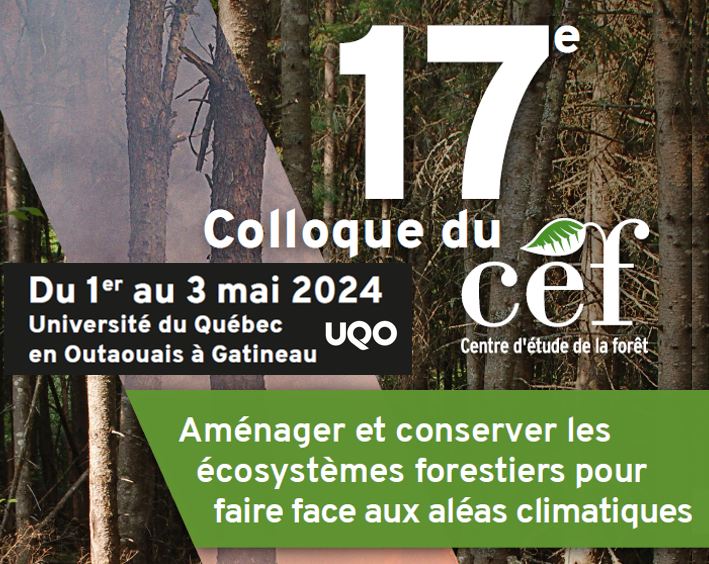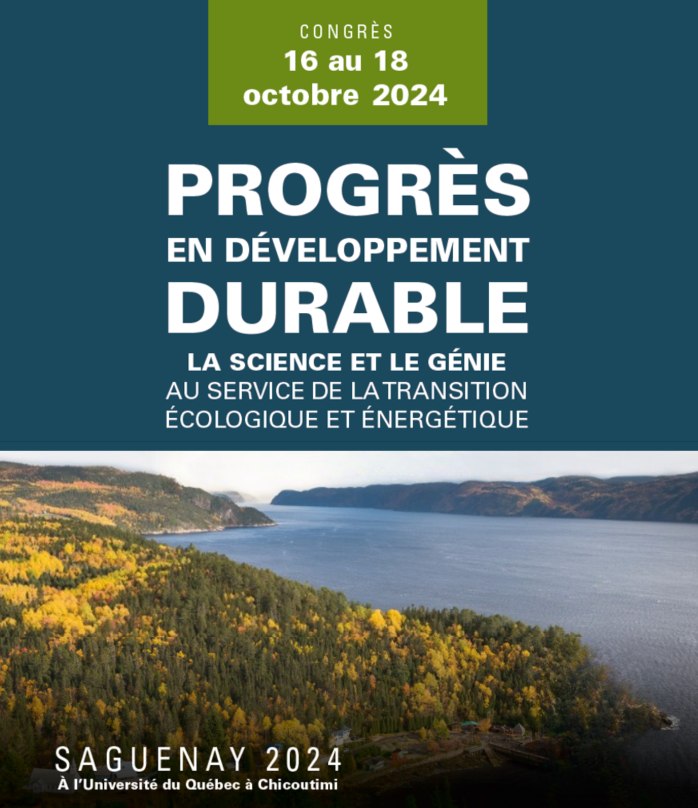
John-William Shipley
Membre régulier
Écologie végétale
Professeur à la retraite
Université de Sherbrooke
Département de biologie
2500, boul. de l'Université
Sherbrooke (Québec) J1K 2R1
Canada
(819) 821-8000 Poste 62079
FORMATION
- Postdoctorat en biologie, 1991 (McGill University)
- Ph.D. en biologie, 1987 (Université d'Ottawa)
- B.Sc. en biologie, 1983 (Université Bishop)
THÈMES DE RECHERCHE
L'objectif de mon programme de recherche en écologie pure est de lier les attributs morphologiques et physiologiques des individus à la structure et à la dynamique des communautés. À cette fin, l'accent est mis sur les comparaisons interspécifiques. Nos travaux portent sur les déterminants du taux de croissance, sur la production des graines et sur les interactions compétitives des espèces sauvages. Ceci comprend des études sur les échanges gazeux, la nutrition minérale, les composés secondaires et la morphologie. L'objectif est de relier ces attributs par la modélisation statistique.
Je suis aussi membre du Centre de la science de la biodiversité du Québec (CSBQ) ![]()
DISTINCTIONS
2006 - Prix de la recherche et de la création, Université Sherbrooke.
Vous pouvez télécharger toutes mes références bibliographiques en format BibTeX, BibTeX-CSV ou EndNote
PUBLICATIONS
Livres
- Shipley, B. (2021) Ordination methods for biologists: a non-mathematical introduction using R. BS Publishing
- Shipley, B. (2016) Cause and Correlation in Biology. A User's Guide to Path Analysis, Structural Equations and Causal Inference with R. Cambridge University Press
- Shipley, B. (2009) From plant traits to vegetation structure. Chance and selection in the assembly of ecological communities. Cambridge University Press, Cambridge UK.
- Shipley, B. (2002) Cause and Correlation in Biology: A User’s Guide to Path Analysis, Structural Equations and Causal Inference. UK, Cambridge University Press
Chapitres de livre
- Shipley, B. (2009) Entropy maximization and species abundance. In Encyclopedia of Complexity & System Science. (Meyers, R., Eds.) Springer
- Shipley, B. (2003) From biological hypotheses to structural equation models : The imperfection of causal translation. In Structural equation modeling : Applications in ecological and evolutionary biology research. (Pugesek, B., Tomer, A. and von Eye, A., Eds.) Cambridge University Press, Cambridge UK
- Fortin, M.-J., Jacquez, G.M., Shipley, B. (2001) Computer intensive sampling in ecology. In Encylopedia of environmetric. (El-Shaarawi, A. H. and Piegorsch, W.W., Eds.) John Wiley & Sons, Chichester, 399–402
- Shipley, B. (1999) Exploring hypothesis space: Examples from organismal biology. In Computation, Causation and Discovery. (Glymour, C. and Cooper, G., Eds.) AAAI/MIT Press
- Keddy, P.A ., Wisheu, I., Shipley, B., Gaudet, C. (1989) Seed banks and vegetation management for conservation. In The Ecology of Soil Seed Banks. (Leck, M.A., Parker, V.T. and Simpson, R.L., Eds.) Academic Press
Livres, numéros spéciaux et actes de colloques publiés à titre d'éditeur
Aucun
Articles révisés par un comité de lecture
- Douma, J.C., Shipley, B. (2023) Testing Model Fit in Path Models with Dependent Errors Given Non-Normality, Non-Linearity and Hierarchical Data. Structural Equation Modeling, 30(2):222 – 233
- Li, Y., Jiang, Y., Zhao, K., Chen, Y., Wei, W., Shipley, B., Chu, C. (2022) Exploring trait–performance relationships of tree seedlings along experimentally manipulated light and water gradients. Ecology, 103(7)
- Diaz, S., Kattge, J., Cornelissen, J.H.C., Wright, I.J., Lavorel, S., Dray, S., Reu, B., Kleyer, M., Wirth, C., Prentice, I.C. et al. (2022) The global spectrum of plant form and function: enhanced species-level trait dataset. Scientific Data, 9(1)
- Cardou, F., Munson, A.D., Boisvert-Marsh, L., Anand, M., Arsenault, A., Bell, F.W., Bergeron, Y., Boulangeat, I., Delagrange, S., Fenton, N.J. et al. (2022) Above- and belowground drivers of intraspecific trait variability across subcontinental gradients for five ubiquitous forest plants in North America. Journal of Ecology, 110(7):1590-1605
- Zhang, L., Ni, M., Zhu, T., Xu, X., Zhou, S., Shipley, B. (2022) Nitrogen Addition in a Tibetan Alpine Meadow Increases Intraspecific Variability in Nitrogen Uptake, Leading to Increased Community-level Nitrogen Uptake. Ecosystems, 25(1):172-183
- Lamontagne, X., Shipley, B. (2022) A measure of generalized soil fertility that is largely independent of species identity. Annals of Botany, 129(1):29-36
- Cardou, F., Aubin, I., Lapointe, M., Shipley, B. (2022) Multifunctionality in practice: Measuring differences in urban woodland ecosystem properties via functional traits. Urban Forestry and Urban Greening, 68
- Zhang, L., Liu, X., Zhou, S., Shipley, B. (2022) Explaining variation in productivity requires intraspecific variability in plant height among communities. Journal of Plant Ecology, 15(2):310 – 319
- dos Santos, D., Joner, F., Shipley, B., Teleginski, M., Lucas, R.R., Siddique, I. (2021) Crop functional diversity drives multiple ecosystem functions during early agroforestry succession. Journal of Applied Ecology, 58(8):1718-1727
- Daou, L., Garnier, E., Shipley, B. (2021) Quantifying the relationship linking the community-weighted means of plant traits and soil fertility. Ecology, 102(9)
- Douma, J.C., Shipley, B. (2021) A multigroup extension to piecewise path analysis. Ecosphere, 12(5)
- Shipley, B., Douma, J.C. (2021) Testing piecewise structural equations models in the presence of latent variables and including correlated errors. Structural Equation Modeling: A Multidisciplinary Journal
- Guerrero-Ramirez, N.R., Mommer, L., Freschet, G.T., Iversen, C.M., McCormack, M.L., Kattge, J., Poorter, H., van der Plas, F., Bergmann, J., Kuyper, T.W. et al. (2021) Global root traits (GRooT) database. Global Ecology and Biogeography, 30(1):25-37
- Shipley, B., Tardif, A. (2021) Causal hypotheses accounting for correlations between decomposition rates of different mass fractions of leaf litter. Ecology, 102(1):e03196
- Li, Y., Jiang, Y., Shipley, B., Li, B., Luo, W., Chen, Y., Zhao, K., He, D., Rodriguez-Hernandez, D.I., Chu, C. (2021) The complexity of trait–environment performance landscapes in a local subtropical forest. New Phytologist, 229(3):1388-1397
- Laigle, I., Moretti, M., Rousseau, L., Gravel, D., Venier, L., Handa, I.T., Messier, C., Morris, D., Hazlett, P., Fleming, R. et al. (2021) Direct and Indirect Effects of Forest Anthropogenic Disturbance on Above and Below Ground Communities and Litter Decomposition. Ecosystems, 24(7):1716-1737
- Gagnon, V., Rodrigue-Morin, M., Tardif, A., Beaudin, J., Greer, C.W., Shipley, B., Bellenger, J.-P., Roy, S. (2020) Differences in elemental composition of tailings, soils, and plant tissues following five decades of native plant colonization on a gold mine site in Northwestern Québec. Chemosphere, 250
- Gagnon, V., Rodrigue-Morin, M., Tardif, A., Beaudin, J., Greer, C.W., Shipley, B., Bellenger, J.-P., Roy, S. (2020) Differences in elemental composition of tailings, soils, and plant tissues following five decades of native plant colonization on a gold mine site in Northwestern Québec. Chemosphere, 250
- Shipley, B., Douma, J.C. (2020) Generalized AIC and chi-squared statistics for path models consistent with directed acyclic graphs. Ecology, 101(3)
- Daou, L., Shipley, B. (2020) Simplifying the protocol for the quantification of generalized soil fertility gradients in grassland community ecology. Plant and Soil, 457(1):457-468
- Cardou, F., Aubin, I., Bergeron, A., Shipley, B. (2020) Functional markers to predict forest ecosystem properties along a rural-to-urban gradient. Journal of Vegetation Science, 31(3):416-428
- Gagnon, V., Rodrigue-Morin, M., Migneault, M., Tardif, A., Garneau, L., Lalonde, S., Shipley, B., Greer, C.W., Bellenger, J.-P., Roy, S. (2020) Survival, growth and element translocation by 4 plant species growing on acidogenic gold mine tailings in Québec. Ecological Engineering, 151
- Juhasz, C.-C., Shipley, B., Gauthier, G., Berteaux, D., Lecomte, N. (2020) Direct and indirect effects of regional and local climatic factors on trophic interactions in the Arctic tundra. Journal of Animal Ecology, 89(3):704-715
- Daou, L., Shipley, B. (2019) The measurement and quantification of generalized gradients of soil fertility relevant to plant community ecology. Ecology, 100(1)
- Kumordzi, B.B., Aubin, I., Cardou, F., Shipley, B., Violle, C., Johnstone, J., Anand, M., Arsenault, A., Bell, F.W., Bergeron, Y. et al. (2019) Geographic scale and disturbance influence intraspecific trait variability in leaves and roots of North American understorey plants. Functional Ecology, 33(9):1771-1784
- Li, Y., Shipley, B. (2019) Functional niche occupation and species richness in herbaceous plant communities along experimental gradients of stress and disturbance. Annals of Botany, 124(5):861-867
- Tardif, A., Rodrigue-Morin, M., Gagnon, V., Shipley, B., Roy, S., Bellenger, J.-P. (2019) The relative importance of abiotic conditions and subsequent land use on the boreal primary succession of acidogenic mine tailings. Ecological Engineering, 127:66-74
- Li, Y., Shipley, B. (2018) Community divergence and convergence along experimental gradients of stress and disturbance. Ecology, 99(4):775-781
- Casals, P., Valor, T., Rios, A.I., Shipley, B. (2018) Leaf and bark functional traits predict resprouting strategies of understory woody species after prescribed fires. Forest Ecology and Management, 429:158-174
- Li, Y., Shipley, B., Price, J.N., Dantas, V.D.L., Tamme, R., Westoby, M., Siefert, A., Schamp, B.S., Spasojevic, M.J., Jung, V. et al. (2018) Habitat filtering determines the functional niche occupancy of plant communities worldwide. Journal of Ecology, 106(3):1001-1009
- Belluau, M., Shipley, B. (2018) Linking hard and soft traits: Physiology, morphology and anatomy interact to determine habitat affinities to soil water availability in herbaceous dicots. PLOS ONE, 13(3)
- Pierce, S., Negreiros, D., Cerabolini, B.E.L., Kattge, J., Diaz, S., Kleyer, M., Shipley, B., Wright, S.J., Soudzilovskaia, N.A., Onipchenko, V.G. et al. (2017) A global method for calculating plant CSR ecological strategies applied across biomes world-wide. Functional Ecology, 31(2):444-457
- Ameztegui, A., Paquette, A., Shipley, B., Heym, M., Messier, C., Gravel, D. (2017) Shade tolerance and the functional trait: demography relationship in temperate and boreal forests. Functional Ecology, 31(4):821-830
- Belluau, M., Shipley, B. (2017) Predicting habitat affinities of herbaceous dicots to soil wetness based on physiological traits of drought tolerance. Annals of Botany, 119(6):1073-1084
- Garnier, E., Stahl, U., Laporte, M.-A., Kattge, J., Mougenot, I., Kuhn, I., Laporte, B., Amiaud, B., Ahrestani, F.S., Bonisch, G. et al. (2017) Towards a thesaurus of plant characteristics: an ecological contribution. Journal of Ecology, 105(2):298-309
- Shipley, B., Belluau, M., Kuhn, I., Soudzilovskaia, N.A., Bahn, M., Penuelas, J., Kattge, J., Sack, L., Cavender-Bares, J., Ozinga, W.A. et al. (2017) Predicting habitat affinities of plant species using commonly measured functional traits. Journal of Vegetation Science, 28(5):1082-1095
- Li, Y., Shipley, B. (2017) An experimental test of CSR theory using a globally calibrated ordination method. PLOS ONE, 12(4)
- Jewell, M.D., Shipley, B., Low-Decarie, E., Tobner, C.M., Paquette, A., Messier, C., Reich, P.B. (2017) Partitioning the effect of composition and diversity of tree communities on leaf litter decomposition and soil respiration. Oikos, 126(7):959-971
- Loranger, J., Blonder, B., Garnier, E., Shipley, B., Vile, D., Violle, C. (2016) Occupancy and overlap in trait space along a successional gradient in mediterranean old fields. American Journal of Botany, 103(6):1050-1060
- Shipley, B., De Bello, F., Cornelissen, J.H.C., Laliberte, E., Laughlin, D.C., Reich, P.B. (2016) Reinforcing loose foundation stones in trait-based plant ecology. Oecologia, 180(4):923-931
- Loranger, J., Violle, C., Shipley, B., Lavorel, S., Bonis, A., Cruz, P., Louault, F., Loucougaray, G., Mesleard, F., Yavercovski, N. et al. (2016) Recasting the dynamic equilibrium model through a functional lens: The interplay of trait-based community assembly and climate. Journal of Ecology, 104(3):781-791
- Pourhassan, N., Bruno, S., Jewell, M.D., Shipley, B., Roy, S., Bellenger, J.-P. (2016) Phosphorus and micronutrient dynamics during gymnosperm and angiosperm litters decomposition in temperate cold forest from Eastern Canada. Geoderma, 273:25-31
- Aubin, I., Munson, A.D., Cardou, F., Burton, P.J., Isabel, N., Pedlar, J.H., Paquette, A., Taylor, A.R., Delagrange, S., Kebli, H. et al. (2016) Traits to stay, traits to move: a review of functional traits to assess sensitivity and adaptive capacity of temperate and boreal trees to climate change. Environmental Reviews, 24(2):164-186
- Diaz, S., Kattge, J., Cornelissen, J.H.C., Wright, I.J., Lavorel, S., Dray, S., Reu, B., Kleyer, M., Wirth, C., Colin Prentice, I. et al. (2016) The global spectrum of plant form and function. Nature, 529(7585):167-171
- Tardif, A., Shipley, B. (2015) The relationship between functional dispersion of mixed-species leaf litter mixtures and species' interactions during decomposition. Oikos, 124(8):1050-1057
- Shipley, B. (2015) Describing, explaining and predicting community assembly: A convincing trait-based case study. Journal of Vegetation Science, 26(4):615-616
- Warton, D.I., Shipley, B., Hastie, T. (2015) CATS regression - a model-based approach to studying trait-based community assembly. Methods in Ecology and Evolution, 6(4):389-398
- Blonder, B., Vasseur, F., Violle, C., Shipley, B., Enquist, B.J., Vile, D. (2015) Testing models for the leaf economics spectrum with leaf and whole-plant traits in Arabidopsis thaliana. AoB Plants, 7(1)
- Jewell, M.D., Shipley, B., Paquette, A., Messier, C., Reich, P.B. (2015) A traits-based test of the home-field advantage in mixed-species tree litter decomposition. Annals of Botany, 116(5):781-788
- Manning, P., de Vries, F.T., Tallowin, J.R.B., Smith, R., Mortimer, S.R., Pilgrim, E.S., Harrison, K.A., Wright, D.G., Quirk, H., Benson, J. et al. (2015) Simple measures of climate, soil properties and plant traits predict national-scale grassland soil carbon stocks. Journal of Applied Ecology, 52(5):1188-1196
- Rivest, D., Paquette, A., Shipley, B., Reich. P., Messier, C. (2015) Tree communities rapidly alter soil microbial resistance and resilience to drought. Functional Ecology, 29:570-578
- Siefert, A., Violle, C., Chalmandrier, L., Albert, C.H., Taudiere, A., Fajardo, A., Aarssen, L.W., Baraloto, C., Carlucci, M.B., Cianciaruso, M.V. et al. (2015) A global meta-analysis of the relative extent of intraspecific trait variation in plant communities. Ecology Letters, 18(12):1406-1419
- Lohier, T., Jabot, F., Meziane, D., Shipley, B., Reich, P.B., Deffuant, G. (2014) Explaining ontogenetic shifts in root–shoot scaling with transient dynamics. Annals of Botany, 114(3):513-524
- Tardif, A., Shipley, B., Bloor, J.M.G., Soussana, J.-F. (2014) Can the biomass-ratio hypothesis predict mixed-species litter decomposition along a climatic gradient? Annals of Botany, 113(5):843-850
- Shipley, B. (2014) Measuring and interpreting trait-based selection versus meta-community effects during local community assembly. Journal of Vegetation Science, 25(1):55-65
- Tardif, A., Shipley, B. (2013) Using the biomass-ratio and idiosyncratic hypotheses to predict mixed-species litter decomposition. Annals of Botany, 111(1):135-141
- Loranger, J., Meyer, S.T., Shipley, B., Kattge, J., Loranger, H., Roscher, C., Wirth, C., Weisser, W.W. (2013) Predicting invertebrate herbivory from plant traits: Polycultures show strong nonadditive effects. Ecology, 94(7):1499-1509
- Frenette-Dussault, C., Shipley, B., Hingrat, Y. (2013) Linking plant and insect traits to understand multitrophic community structure in arid steppes. Functional Ecology, 27(3):786-792
- Shipley, B. (2013) The AIC model selection method applied to path analytic models compared using a d-separation test. Ecology, 94(3):560-564
- Auger, S., Shipley, B. (2013) Inter-specific and intra-specific trait variation along short environmental gradients in an old-growth temperate forest. Journal of Vegetation Science, 24(3):419-428
- Frenette-Dussault, C., Shipley, B., Meziane, D., Hingrat, Y. (2013) Trait-based climate change predictions of plant community structure in arid steppes. Journal of Ecology, 101(2):484-492
- Shipley, B., Timothy Paine, C.E., Baraloto, C. (2012) Quantifying the importance of local niche-based and stochastic processes to tropical tree community assembly. Ecology, 93(4):760-769
- Douma, J.C., Shipley, B., Witte, J.P., Aerts, R., van Bodegom, P.M. (2012) Disturbance and resource availability act differently on the same suite of plant traits: revisiting assembly hypotheses. Ecology, 93(4):825-835
- Frenette-Dussault, C., Shipley, B., Leger, J.-F., Meziane, D., Hingrat, Y. (2012) Functional structure of an arid steppe plant community reveals similarities with Grime's C-S-R theory. Journal of Vegetation Science, 23(2):208-222
- Sonnier, G., Navas, M.-L., Fayolle, A., Shipley, B. (2012) Quantifying trait selection driving community assembly: a test in herbaceous plant communities under contrasted land use regimes. Oikos, 121(7):1103-1111
- Lachapelle, P.-P., Shipley, B. (2012) Interspecific prediction of photosynthetic light response curves using specific leaf mass and leaf nitrogen content: Effects of differences in soil fertility and growth irradiance. Annals of Botany, 109(6):1149-1157
- de Vries, F.T., Manning, P., Tallowin, J.R.B., Mortimer, S.R., Pilgrim, E.S., Harrison, K.A., Hobbs, P.J., Quirk, H., Shipley, B., Cornelissen, J.H.C. et al. (2012) Abiotic drivers and plant traits explain landscape-scale patterns in soil microbial communities. Ecology Letters, 15(11):1230-1239
- Loranger, J., Meyer, S.T., Shipley, B., Kattge, J., Loranger, H., Roscher, C., Weisser, W.W. (2012) Predicting invertebrate herbivory from plant traits: Evidence from 51 grassland species in experimental monocultures. Ecology, 93(12):2674-2682
- Laliberte, E., Shipley, B., Norton, D.A., Scott, D. (2012) Which plant traits determine abundance under long-term shifts in soil resource availability and grazing intensity? Journal of Ecology, 100(3):662-677
- Aulen, M., Shipley, B., Bradley, R.L. (2012) Prediction of in situ root decomposition rates in an interspecific context from chemical and morphological traits. Annals of Botany, 109(1):287-297
- Shipley, B., Laughlin, D.C., Sonnier, G., Ottinowski, R. (2011) A strong test of a maximum entropy model of trait-based community assembly. Ecology, 92(2):507-17
- Kattge, J., Diaz, S., Lavorel, S., Prentice, I.C., Leadley, P., Bonisch, G., Garnier, E., Westoby, M., Reich, P.B., Wright, I.J. et al. (2011) TRY - a global database of plant traits. Global Change Biology, 17(9):2905-2935
- Hodgson, J.G., Montserrat-Marti, G., Charles, M., Jones, G., Wilson, P., Shipley, B., Sharafi, M., Cerabolini, B.E.L., Cornelissen, J.H.C., Band, S.R. et al. (2011) Is leaf dry matter content a better predictor of soil fertility than specific leaf area? Annals of Botany, 108(7):1337-1345
- Useche, A., Shipley, B. (2010) Plasticity in relative growth rate after a reduction in nitrogen availability is related to root morphological and physiological responses. Annals of Botany, 106(4):617-625
- Shipley, B. (2010) Inferential permutation tests for maximum entropy models in ecology. Ecology, 91(9):2794-2805
- Sonnier, G., Shipley, B., Navas, M.-L. (2010) Plant traits, species pools and the prediction of relative abundance in plant communities: a maximum entropy approach. Journal of Vegetation Science, 21(2):318-331
- Useche, A., Shipley, B. (2010) Interspecific correlates of plasticity in relative growth rate following a decrease in nitrogen availability. Annals of Botany, 105(2):333-339
- Shipley, B. (2010) Community assembly, natural selection and maximum entropy models. Oikos, 119(4):604-609
- Bergeron, P., Grignolio, S., Apollonio, M., Shipley, B., Festa-Bianchet, M. (2010) Secondary sexual characters signal fighting ability and determine social rank in Alpine ibex (Capra ibex). Behavioral Ecology and Sociobiology, 64(8):1299-1307
- Loranger, J., Shipley, B. (2010) Interspecific covariation between stomatal density and other functional leaf traits in a local flora. Botany, 88(1):30-38
- Thomas, D.W., Bourgault, P., Shipley, B., Perret, P., Blondel, J. (2010) Context-dependent Changes in the Weighting of Environmental Cues That Initiate Breeding in a Temperate Passerine, the Corsican Blue Tit (Cyanistes caeruleus). Auk, 127(1):129-139
- Sonnier, G., Shipley, B., Navas, M.-L. (2010) Quantifying relationships between traits and explicitly measured gradients of stress and disturbance in early successional plant communities. Journal of Vegetation Science, 21(6):1014-1024
- Marino, G., Aqil, M., Shipley, B. (2010) The leaf economics spectrum and the prediction of photosynthetic light-response curves. Functional Ecology, 24(2):263-272
- Shipley, B. (2009) Trivial and non-trivial applications of entropy maximization in ecology: Shipley's reply. Oikos, 118(8):1279-1280
- Dubois, Y., Blouin-Demers, G., Shipley, B., Thomas, D. (2009) Thermoregulation and habitat selection in wood turtles Glyptemys insculpta: chasing the sun slowly. Journal of Animal Ecology, 78(5):1023-1032
- Shipley, B. (2009) Confirmatory path analysis in a generalized multilevel context. Ecology, 90(2):363-368
- Saura-Mas, S., Shipley, B., Lloret, F. (2009) Relationship between post-fire regeneration and leaf economics spectrum in Mediterranean woody species. Functional Ecology, 23(1):103-110
- Shipley, B. (2009) Limitations of entropy maximization in ecology: a reply to Haegeman and Loreau. Oikos, 118(1):152-159
- Kang, C., Shipley, B. (2009) A correction note on a new inferential test for path models based on directed acyclic graphs. Structural Equation Modeling, 16(3):537-538
- Shipley, B., Vile, D., Garnier, E. (2007) Response to comments on "From plant traits to plant communities: A statistical mechanistic approach to biodiversity". Science, 316(5830):U4-U6
- Shipley, B. (2007) Comparative plant ecology as a tool for integrating across scales. Annals of Botany, 99:965-966
- Lamarche, J., Bradley, R.L., Hooper, E., Shipley, B., Simao Beaunoir, A.-M., Beaulieu, C. (2007) Forest floor bacterial community composition and catabolic profiles in relation to landscape features in Quebec's southern boreal forest. Microbial Ecology, 54(1):10-20
- Niklas, K.J., Cobb, E.D., Niinemets, U., Reich, P.B., Sellin, A., Shipley, B., Wright, I.J. (2007) "Diminishing returns" in the scaling of functional leaf traits across and within species groups. Proceedings of the National Academy of Sciences of the United States of America, 104(21):8891-8896
- Thomas, D.W., Shipley, B., Blondel, J., Perret, P., Simon, A., Lambrechts, M.M. (2007) Common paths link food abundance and ectoparasite loads to physiological performance and recruitment in nestling blue tits. Functional Ecology, 21(5):947-955
- Shipley, B. (2006) Net assimilation rate, specific leaf area and leaf mass ratio: which is most closely correlated with relative growth rate? A meta-analysis. Functional Ecology, 20(4):565-574
- Kazakou, E., Vile, D., Shipley, B., Gallet, C., Garnier, E. (2006) Co-variations in litter decomposition, leaf traits and plant growth in species from a Mediterranean old-field succession. Functional Ecology, 20(1):21-30
- Vile, D., Shipley, B., Garnier, E. (2006) Ecosystem productivity can be predicted from potential relative growth rate and species abundance. Ecology Letters, 9(9):1061-1067
- Vile, D., Shipley, B., Garnier, E. (2006) A structural equation model to integrate changes in functional strategies during old-field succession. Ecology, 87(2):504-517
- Shipley, B., Lechowicz, M.J., Wright, I., Reich, P.B. (2006) Fundamental trade-offs generating the worldwide leaf economics spectrum. Ecology, 87(3):535-541
- Prevost, K., Couture, G., Shipley, B., Brzezinski, R., Beaulieu, C. (2006) Effect of chitosan and a biocontrol streptomycete on field and potato tuber bacterial communities. BioControl, 51(4):533-546
- Bradley, R.L., Shipley, B., Beaulieu, C. (2006) Refining numerical approaches for analyzing soil microbial community catabolic profiles based on carbon source utilization patterns. Soil Biology and Biochemistry, 38(3):629-632
- Shipley, B., Vile, D., Garnier, E. (2006) From plant traits to plant communities: A statistical mechanistic approach to biodiversity. Science, 314(5800):812-814
- Grenon, F., Bradley, R.L., Jones, M.D., Shipley, B., Peat, H. (2005) Soil factors controlling mineral N uptake by Picea engelmannii seedlings: The importance of gross NH4+ production rates. New Phytologist, 165(3):791-799
- Chbouki, S., Shipley, B., Bamouh, A. (2005) Path models for the abscission of reproductive structures in three contrasting cultivars of faba bean (Vicia faba). Canadian Journal of Botany, 83(3):264-271
- Vile, D., Garnier, E., Shipley, B., Laurent, G., Navas, M. L., Roumet, C., Lavorel, S., Diaz, S., Hodgson, J. G., Lloret, F. et al. (2005) Specific leaf area and dry matter content estimate thickness in laminar leaves. Annals of Botany, 96(6):1129-1136
- Shipley, B., Vile, D., Garnier, E., Wright, I.J., Poorter, H. (2005) Functional linkages between leaf traits and net photosynthetic rate: reconciling empirical and mechanistic models. Functional Ecology, 19:602-615
- Lapointe, B., Bradley, R.L., Shipley, B. (2005) Mineral nitrogen and microbial dynamics in the forest floor of clearcut or partially harvested successional boreal forest stands. Plant and Soil, 271(1-2):27-37
- Almeida-Cortez, J.S., Shipley, B., Arnason, J.T. (2004) Growth and chemical defense in relation to resource availability: tradeoffs or common responses to environmental stress? Brazilian Journal of Biology, 64:187-194
- Shipley, B. (2004) Analysing the allometry of multiple interacting traits. Perspectives in Plant Ecology, Evolution and Systematics, 6(4):235-241
- Almeida-Cortez, J.S., Shipley, B., Arnason, J.T. (2003) Effects of nutrient availability on the production of pentaynene, a secondary compound related to defense, in Rudbeckia hirta. Plant Species Biology, 18(2-3):85-89
- Shipley, B. (2003) Testing recursive path models with correlated errors using d-separation. Structural Equation Modeling, 10:214-221
- Shipley, B., Almeida-Cortez, J. (2003) Interspecific consistency and intraspecific variability of specific leaf area with respect to irradiance and nutrient availability. Ecoscience, 10(1):74-79
- Von Hardenberg, A., Shipley, B., Festa-Bianchet, M. (2003) Another one bites the dust: Does incisor-arcade size affect mass gain and survival in grazing ungulates? Canadian Journal of Zoology, 81(9):1623-1629
- Almeida-Cortez, J.S., Shipley, B. (2002) No significant relationship exists between seedling relative growth rate under nutrient limitation and potential tissue toxicity. Functional Ecology, 16(1):122-127
- Shipley, B., Vu, T.T. (2002) Dry matter content as a measure of dry matter concentration in plants and their parts. New Phytologist, 153(2):359-364
- Shipley, B., Meziane, D. (2002) The balanced-growth hypothesis and the allometry of leaf and root biomass allocation. Functional Ecology, 16(3):326-331
- Shipley, B. (2002) Trade-offs between net assimilation rate and specific leaf area in determining relative growth rate: Relationship with daily irradiance. Functional Ecology, 16(5):682-689
- Shipley, B. (2002) Start and stop rules for exploratory path analysis. Structural Equation Modeling, 9:554-561
- Hunt, R., Causton, D.R., Shipley, B., Askew, A.P. (2002) A modern tool for classical plant growth analysis. Annals of Botany, 90(4):485-488
- Garnier, E., Shipley, B., Roumet, C., Laurent, G. (2001) A standardized protocol for the determination of specific leaf area and leaf dry matter content. Functional Ecology, 15(5):688-695
- Meziane, D., Shipley, B. (2001) Direct and indirect relationships between specific leaf area, leaf nitrogen and leaf gas exchange. Effects of irradiance and nutrient supply. Annals of Botany, 88(5):915-927
- Shipley, B., Lechowicz, M.J. (2000) The functional co-ordination of leaf morphology, nitrogen concentration, and gas exchange in 40 wetland species. Ecoscience, 7(2):183-194
- Shipley, B. (2000) Plasticity in relative growth rate and its components following a change in irradiance. Plant, Cell and Environment, 23(11):1207-1216
- Shipley, B. (2000) A new inferential test for path models based on directed acyclic graphs. Structural Equation Modeling, 7:206-218
- Shipley, B. (2000) A permutation procedure for testing the equality of pattern hypotheses across groups involving correlation or covariance matrices. Statistics and Computing, 10:253-257
- Meziane, D., Shipley, B. (1999) Interacting components of interspecific relative growth rate: Constancy and change under differing conditions of light and nutrient supply. Functional Ecology, 13(5):611-622
- McKenna, M.F., Shipley, B. (1999) Interacting determinants of interspecific relative growth: Empirical patterns and a theoretical explanation. Ecoscience, 6(2):286-296
- Almeida-Cortez, J.S., Shipley, B., Arnason, J.T. (1999) Do plant species with high relative growth rates have poorer chemical defences? Functional Ecology, 13(6):819-827
- Shipley, B. (1999) Testing causal explanations in organismal biology: Causation, correlation and structural equation modelling. Oikos, 86(2):374-382
- Meziane, D., Shipley, B. (1999) Interacting determinants of specific leaf area in 22 herbaceous species: Effects of irradiance and nutrient availability. Plant, Cell and Environment, 22(5):447-459
- Pyankov, V.I., Kondratchuk, A.V., Shipley, B. (1999) Leaf structure and specific leaf mass: The alpine desert plants of the Eastern Pamirs, Tadjikistan. New Phytologist, 143(1):131-142
- Keddy, P., Twolan-Strutt, L., Shipley, B. (1997) Experimental evidence that interspecific competitive asymmetry increases with soil productivity. Oikos, 80(2):253-256
- Shipley, B. (1997) Exploratory path analysis with applications in ecology and evolution. American Naturalist, 149(6):1113-1138
- Shipley, B., Hunt, R. (1996) Regression smoothers for estimating parameters of growth analyses. Annals of Botany, 78(5):569-576
- Visman, V., Pesant, S., Dion, J., Shipley, B., Peters, R.H. (1996) Joint effects of maternal and offspring sizes on clutch mass and fecundity in plants and animals. Ecoscience, 3(2):173-182
- McCanny, S.J., Hendershot, W.H., Lechowicz, M.J., Shipley, B. (1995) The effects of aluminum on Picea rubens: Factorial experiments using sand culture. Canadian Journal of Forest Research, 25(1):8-17
- Shipley, B. (1995) Structured interspecific determinants of specific leaf area in 34 species of herbaceous angiosperms. Functional Ecology, 9(2):312-319
- Shipley, B., Keddy, P.A. (1994) Evaluating the evidence for competitive hierarchies in plant communities. Oikos, 69(2):340-345
- Reader, R.J., Wilson, S.D., Belcher, J.W., Wisheu, I., Keddy, P.A., Tilman, D., Morris, E.C., Grace, J.B., McGraw, J.B., Olff, H. et al. (1994) Plant competition in relation to neighbor biomass: An intercontinental study with Poa pratensis. Ecology, 75(6):1753-1760
- Shipley, B. (1993) A null model for competitive hierarchies in competition matrices. Ecology, 74(6):1693-1699
- Shipley, B., Lechowicz, M.J., Dumont, S., Hendershot, W.H. (1992) Interacting Effects of Nutrients, Ph-Al and Elevated Co2 on the Growth of Red Spruce (Picea-Rubens Sarg) Seedlings. Water, Air, and Soil Pollution, 64(3-4):585-600
- Shipley, B., Dion, J. (1992) The allometry of seed production in herbaceous angiosperms. American Naturalist, 139(3):467-483
- Shipley, B., Keddy, P.A., Gaudet, C., Moore, D.R.J. (1991) A model of species density in shoreline vegetation. Ecology, 72(5):1658-1667
- Shipley, B., Parent, M. (1991) Germination responses of 64 wetland species in relation to seed size, minimum time to reproduction and seedling relative growth rate. Functional Ecology, 5(1):111-118
- Shipley, B., Keddy, P.A., Lefkovitch, L.P. (1991) Mechanisms producing plant zonation along a water depth gradient: a comparison with the exposure gradient. Canadian Journal of Botany, 69(7):1420-1424
- Shipley, B., Peters, R.H. (1991) The seduction by mechanism: A reply to Tilman. American Naturalist, 138:1276-1282
- Shipley, B., Peters, R.H. (1990) A test of the Tilman model of plant strategies: relative growth rate and biomass partitioning. American Naturalist, 136(2):139-153
- McCanny, S.J., Keddy, P.A., Arnason, T.J., Gaudet, C.L., Moore, D.R.J., Shipley, B. (1990) Fertility and the food quality of wetland plants: a test of the resource availability hypothesis. Oikos, 59(3):373-381
- Shipley, B., Peters, R.H. (1990) The allometry of seed weight and seedling relative growth rate. Functional Ecology, 4(4):523-529
- Keddy, P.A., Shipley, B. (1989) Competitive hierarchies in herbaceous plant communities. Oikos, 54(2):234-241
- Shipley, B. (1989) The use of above-ground maximum relative growth rate as an accurate predictor of whole-plant maximum relative growth rate. Functional Ecology, 3(6):771-775
- Shipley, B., Keddy, P.A., Moore, D.R.J., Lemky, K. (1989) Regeneration and establishment strategies of emergent macrophytes. Journal of Ecology, 77(4):1093-1110
- Shipley, B., Keddy, P.A. (1988) The relationship between relative growth rate and sensitivity to nutrient stress in twenty-eight species of emergent macrophytes. Journal of Ecology, 76(4):1101-1110
- Van Hulst, R., Shipley, B., Theriault, A. (1987) Why is Rhinanthus minor ( Scrophulariaceae) such a good invader? Canadian Journal of Botany, 65(11):2373-2379
- Shipley, B. (1987) The relationship between dynamic game theory and the Lotka-Volterra competition equations. Journal of Theoretical Biology, 125:121-123
- Shipley, B., Keddy, P.A. (1987) The individualistic and community-unit concepts as falsifiable hypotheses. Vegetatio, 69(1-3):47-55
- Van Hulst, R., Theriault, A., Shipley, B. (1986) The systematic position of the genus Rhinananthus (Schrophulariaciae) in North America. Canadian Journal of Botany, 64:1443-1449
Articles publiés dans des actes de colloque (proceedings)
Aucun
Rapports scientifiques, manuels et autres
Aucun
Thèses, mémoires et essais
- Shipley, B. (1987) Pattern and mechanism in the emergent macrophyte communities along the Ottawa River (Canada). Thèse de doctorat, University of Ottawa
Thèses, mémoires et essais supervisés
- Aulen, M. (2011) Une approche fonctionnelle pour l'estimation des taux de décomposition racinaire et flux de carbone associés: Contribution à l'estimation du potentiel de séquestration du carbone dans les sols agroforestiers. Thèse de doctorat, Université de Sherbrooke
- Sonnier, G. (2009) Des traits des espèces à la structure des communautés végétales : vers une approche fonctionnelle et prédictive de l'écologie des communautés. Thèse de doctorat, Université de Sherbrooke
- Marino, G. (2008) Prévoir la capacité photosynthétique d’une feuille à partir d’une combinaison de ses traits fonctionnels : un test en milieu naturel. Mémoire de maîtrise, Université de Sherbrooke
- Dostie, G. (2006) Réponse de plantes de sous-bois à différentes conditions de luminosité, d'approvissionnement en sels-minéraux et de pH. Mémoire de maîtrise, Université de Sherbrooke
- Kiki, M.S. (2006) Plasticité phénotypique de Kalmia angustifolia face aux variations de luminosité et de substrat. Mémoire de maîtrise, Université de Sherbrooke
- Vile, D. (2005) Significations fonctionnelle et écologique des traits des espèces végétales : exemple dans une succession post-culturale méditerranéenne et généralisations. Thèse de doctorat, Université de Sherbrooke
- Boulanger, F. (2005) Effets direct et indirect de Kalmia angustifolia sur la régénération des Épinettes Noires. Mémoire de maîtrise, Université de Sherbrooke
- Nduwamungu, C. (2000) Étude d'une triple interaction sol-boues-plantes dans l'objectif de phytoremédiation des terrains contaminés par une sélection d'hydrocarbures aromatiques polycycliques. Mémoire de maîtrise, Université de Sherbrooke
- McKenna, M.F. (1995) La variation interspécifique du taux de croissance relatif en fonction des attributs morphologiques et physiologiques d'angiospermes herbacés. Mémoire de maîtrise, Université de Sherbrooke
- Brazeau, J. (1994) La révégétation des résidus miniers sulfurés. Mémoire de maîtrise, Université de Sherbrooke
- Leclerc, J.-M. (1993) Le reboisement forestier et ses impacts sur la diversité biologique des forêts Québécoises. Mémoire de maîtrise, Université de Sherbrooke
Articles non révisés par un comité de lecture
Aucun
<< | MembresReguliers | >>











